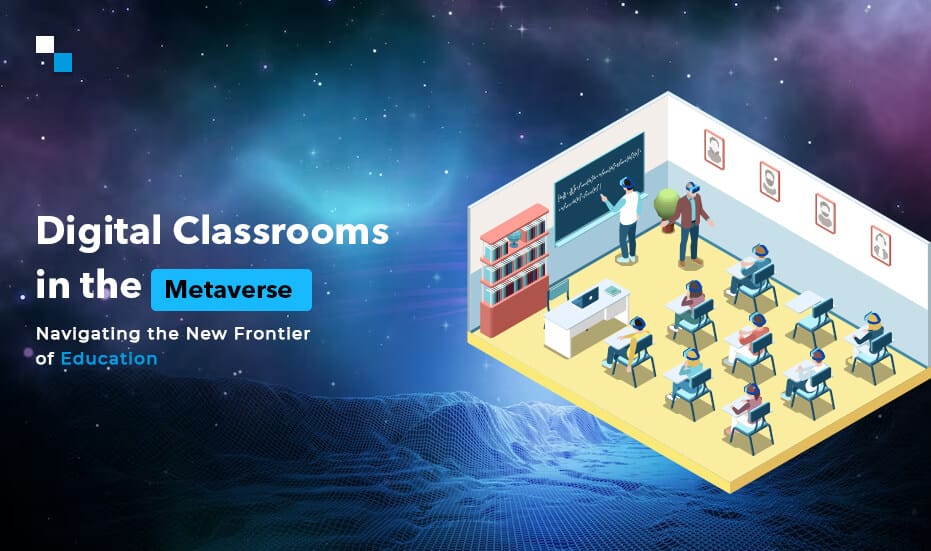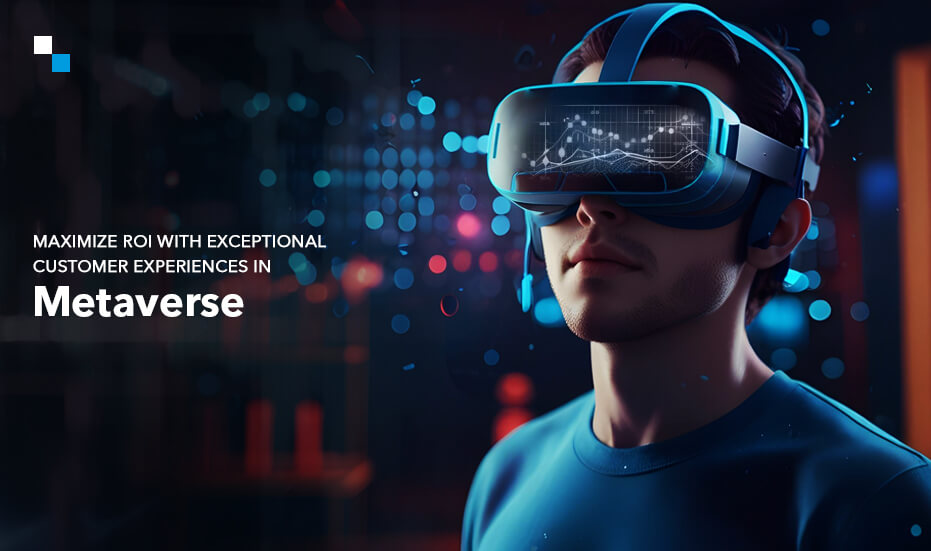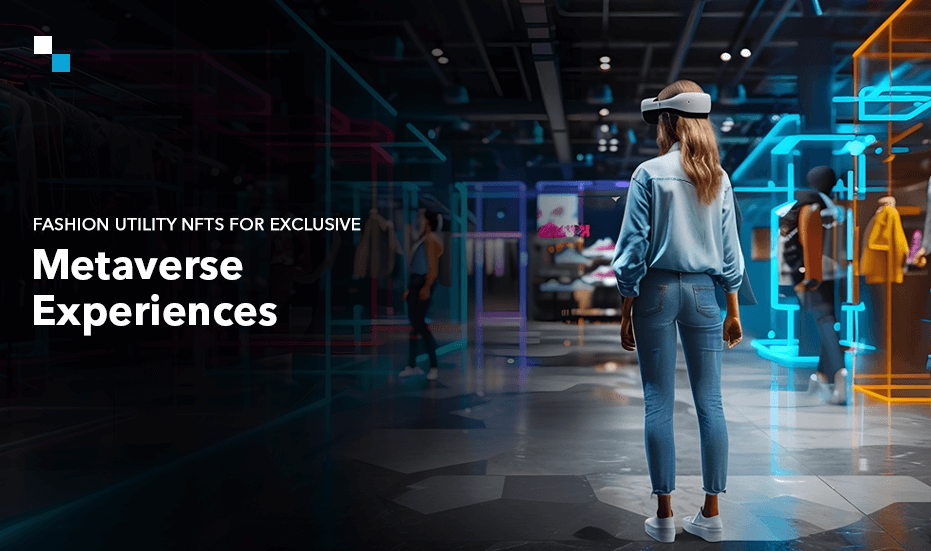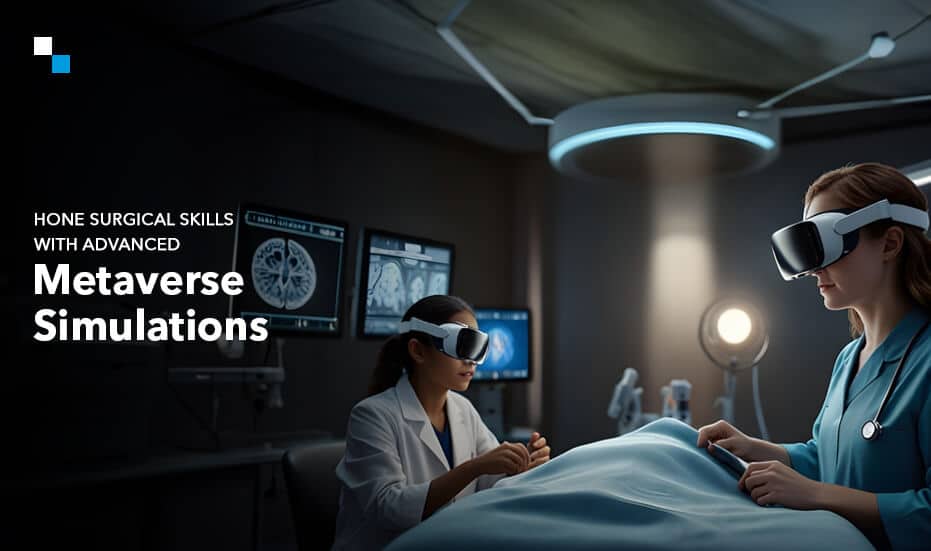
The Global Regulatory Landscape for Asset Tokenization
November 17, 2023
Key Reasons to Opt For Solana Blockchain Development in 2024
November 20, 2023In today’s digital era, the potential for knowledge transfer has expanded immensely. With the rise of virtual reality and the metaverse, education has found new avenues for engaging and immersive learning experiences. According to Statista, by 2023, the market for metaverse education is expected to be worth US$1.9 billion, and by 2030, the estimated market size will reach US$24.7 billion. At the same time, there will be 104.6 million users by 20230 in the Metaverse Education sector, according to estimates.
The sensation of presence in a metaverse platform for education is distinguishable. It encompasses a variety of technologies, such as augmented reality (AR) glasses that will eventually project computer-generated images onto the surrounding environment, mixed reality (MR) experiences that combine virtual and physical environments and virtual reality (VR) headsets that immerse you in whole new environments and allow you to interact with others as avatars. By initiating virtual learning platform development, you may provide a more realistic 3D experience and help the students feel as though they are in a different location or with another person.
In the ever-evolving landscape of education, the metaverse has emerged as a revolutionary platform, reshaping traditional learning paradigms. Metaverse is a unique combination of technologies that have unfolded new methods for instructors to engage and communicate with their students. As we venture into this virtual realm, it opens up countless possibilities for knowledge transfer, transcending the constraints of physical classrooms.
Why Develop a Metaverse Platform for Education?
Gone are the days when students remained confined to textbooks. They can now access the internet and join metaverse classes to gain a deep understanding of different subjects without moving out of their comfort zones. It’s made possible by technology that includes AR/VR/XR along with the blockchain. However, the educationists and technologists need to sit together and have brainstorming sessions to define the goals and prepare the development plan for the metaverse platform for education.
Before diving into the key points of virtual learning platform development, let’s briefly discuss why educators should consider this innovative approach to teaching. A metaverse classroom offers several advantages over traditional learning methods:
- Immersive Learning Environments: In a metaverse classroom, students can engage with educational content in a highly interactive and immersive 3D environment. This fosters a deeper understanding of complex concepts and enhances critical thinking skills.
- Collaborative Learning Opportunities: A metaverse classroom allows students to collaborate with classmates and learn through social interactions. They can work together on projects, communicate via voice chats, and engage in virtual group discussions, simulating real-world collaboration.
- Accessibility and Flexibility: Metaverse classrooms break down geographical barriers, allowing students to connect and learn from anywhere in the world. This opens up educational opportunities to students who may not have access to certain resources or specialized courses locally.
Key Points to Consider
The idea of creating a virtual space where students can engage in immersive learning experiences is both exciting and innovative. However, before diving into the development process, there are several necessary points that educators and developers need to consider. Let’s explore the key points that educators and developers should consider during the development process for the metaverse platform for education:
1. Choosing the Subject and Topic
When developing a metaverse education platform, it is crucial to select a subject and topic that aligns with the educational goals and objectives. Consider the age group and grade level of the students who will be utilizing the platform. Will it be used for primary education, secondary education, or even higher education? By identifying the target audience, educators can tailor the content and activities to suit their needs appropriately.
2. Designing 3D Spaces
An integral part of the virtual learning platform development is to prepare the design of 3D spaces. These virtual environments should be engaging, visually appealing, and conducive to learning. Utilize advanced graphics and modeling techniques to create realistic and immersive settings that allow students to explore and interact with various objects and scenarios. By incorporating elements of gamification, students can experience an enhanced learning environment that promotes active participation and knowledge retention.
3. Preparing a Lesson Plan
Just like in traditional education settings, a metaverse platform for education requires a well-prepared lesson plan. Outline the learning objectives, instructional activities, and assessments that will be incorporated into the virtual environment. Consider how the 3D spaces will be utilized to support the lesson content and objectives. Break down the lesson into smaller segments and account for different learning styles to ensure a comprehensive and inclusive educational experience.
4. Providing Answers
One of the advantages of a metaverse education platform is the ability to provide immediate feedback and answers to students’ questions. Incorporate an intelligent system that can respond to students’ queries, provide explanations, and give guidance when needed. This interactive feature not only enhances the learning experience but also fosters a sense of self-paced exploration and discovery.
Technical Aspects of Virtual Learning Platform Development
Developing a metaverse platform for education involves intricate technical aspects, including UI/UX design, scalable architecture, engaging content, real-time collaboration features, customization, security, and privacy for personalized learning. Integration of AR/VR enhances immersive experiences, fostering a dynamic and effective online educational environment. Here are more details:
1. Easy-to-Use Interface
A metaverse classroom should have a user-friendly interface to ensure that students, especially those who may not be tech-savvy, can easily navigate and interact within the virtual environment. Intuitive controls and clear instructions are essential for a smooth learning experience.
2. Engaging and Interactive Content
The metaverse classroom should offer engaging and interactive educational content to promote active learning. This can include 3D models, simulations, gamified activities, and virtual experiments. Educators can make complex subjects more accessible and enjoyable for students by integrating multimedia elements.
3. Customization and Personalization
A metaverse classroom should be customizable to cater to the diverse learning needs and preferences of students. This includes the ability to personalize avatars, adjust learning environments, and choose different instructional approaches. Customization fosters a sense of ownership and engagement among students, enhancing their overall learning experience.
4. Security and Privacy Measures
The virtual learning platform development process will be incomplete without paying heed to security and privacy measures, especially when dealing with student data. Encryption protocols, secure login procedures, and clear data protection policies should be in place to safeguard student information. Additionally, parental consent should be obtained for students under the legal age.
5. Accessibility Features
It is crucial to consider accessibility features in the design and development of a metaverse platform for education. This includes providing closed captions for audio content, alternative text for visual elements, and adjustable font sizes. By making the platform inclusive, educators can ensure that all students, regardless of their abilities, can actively participate in the learning process.
6. Integration with Learning Management Systems
To streamline the learning experience, a metaverse classroom should be seamlessly integrated with existing Learning Management Systems. This enables educators to efficiently manage course materials, assignments, and assessments. It also ensures the smooth transfer of student data and progress.
7. Regular Updates and Support
Technology is ever-evolving, and a metaverse classroom should constantly adapt to meet the changing needs of educators and students. Regular updates, bug fixes, and technical support are essential to address any issues and ensure the smooth functioning of the platform. User feedback should be actively sought and considered for continuous improvement.
Real-world Examples of Metaverse Classroom
The concept of metaverse classrooms was gaining traction. Here are a few notable instances:
- VirBELA: VirBELA offers virtual classrooms and auditoriums. It provides a 3D immersive environment for students and educators to engage in a more interactive learning experience.
- Engage: Engage is a VR education platform that facilitates virtual classrooms and collaborative learning experiences. It supports various educational content types, including presentations, simulations, and interactive activities.
- AltspaceVR: AltspaceVR solves educational purposes by hosting events and meetups. It offers a shared virtual space where participants can engage in discussions, making it suitable for virtual classrooms.
- Mozilla Hubs: Mozilla Hubs enables users to create and customize their virtual spaces. While not exclusively designed for education, it has been utilized for virtual events and meetings, including educational purposes and virtual classrooms.
- Rumii: Rumii is a virtual reality software that supports remote collaboration and education. It provides features for virtual classrooms, allowing participants to engage in discussions, share content, and collaborate in real-time.
Conclusion
The metaverse platform presents a unique opportunity for educators to transform the way knowledge is transferred and received. Virtual learning platform development offers exciting possibilities for transforming education. Through immersive experiences, collaboration, and accessibility, the metaverse has the potential to revolutionize education and empower students in their learning journey.
We at Antier consider key points such as a user-friendly interface, engaging content, customization, security measures, accessibility features, integration with learning management systems, and regular updates and support while developing a metaverse platform for education. We ensure that your metaverse classroom enhances learning outcomes and engages students in innovative ways. Let’s open doors to a new era of education together!



